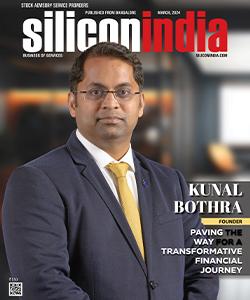Now local shops, retirees can sell rural banking
By
siliconindia | Thursday, August 20, 2009
Mumbai: A panel of the Indian central bank has recommended that owners of provision stores and medical shops, public call office (PCO) operators, petrol pump owners, insurance agents as well as retired teachers should be allowed to act as business correspondents for banks in rural and semi-urban areas to extend the reach of banking services, reports Mint.
The central bank has put the recommendations of the panel on its website, but it is not clear when the bank is planning to implement them. Once implemented, they will likely increase the coverage of banking services in India. Currently, only 5.2 percent of India's 650,000 villages have bank branches. There are close to 32,000 branches in rural India.
The business facilitator (BC) model is critical to financial inclusion but it has not yet taken off for operational reasons. Currently this model allows non-governmental organizations, self-help groups, micro finance organizations, farmers' clubs, post offices, co-operatives, panchayats and many others, including IT-enabled rural outlets of companies and insurance agents, to act as intermediaries on commission.
A recent study by Skoch Development Foundation, a strategy and management consultancy, based on 28 financial inclusion projects and a large banking correspondent project in Andhra Pradesh, has found that the BC model is not commercially viable. The gap between what the banks are paying BCs or vendors and what actually such entities spend in two years, works out to  26.25 per account.
Earlier Reserve Bank in January 2006, permitted banks to use intermediaries as business facilitators (BFs) or BCs for providing financial and banking services with the objective of ensuring greater financial inclusion and increasing outreach of the banking sector.
RBI deputy governor K.C. Chakrabarty in a recent speech said, "45.9 million farmer households out of a total of 89.3 million households do not have access to credit either from institutional or non-institutional sources and only 17 credit accounts and 54 saving accounts are there per 100 persons." According to him, only 13 percent of the population in rural India earning less than
26.25 per account.
Earlier Reserve Bank in January 2006, permitted banks to use intermediaries as business facilitators (BFs) or BCs for providing financial and banking services with the objective of ensuring greater financial inclusion and increasing outreach of the banking sector.
RBI deputy governor K.C. Chakrabarty in a recent speech said, "45.9 million farmer households out of a total of 89.3 million households do not have access to credit either from institutional or non-institutional sources and only 17 credit accounts and 54 saving accounts are there per 100 persons." According to him, only 13 percent of the population in rural India earning less than  50,000 a year is borrowing from banks. The working group wants banks to use the distribution model for the full range of financial activities.
With the Union and state governments planning to route various government payments through the banking system, the BCs could be the ideal vehicle for the banks to handle the huge volumes of low-value transactions, the RBI panel said.
50,000 a year is borrowing from banks. The working group wants banks to use the distribution model for the full range of financial activities.
With the Union and state governments planning to route various government payments through the banking system, the BCs could be the ideal vehicle for the banks to handle the huge volumes of low-value transactions, the RBI panel said.
 26.25 per account.
Earlier Reserve Bank in January 2006, permitted banks to use intermediaries as business facilitators (BFs) or BCs for providing financial and banking services with the objective of ensuring greater financial inclusion and increasing outreach of the banking sector.
RBI deputy governor K.C. Chakrabarty in a recent speech said, "45.9 million farmer households out of a total of 89.3 million households do not have access to credit either from institutional or non-institutional sources and only 17 credit accounts and 54 saving accounts are there per 100 persons." According to him, only 13 percent of the population in rural India earning less than
26.25 per account.
Earlier Reserve Bank in January 2006, permitted banks to use intermediaries as business facilitators (BFs) or BCs for providing financial and banking services with the objective of ensuring greater financial inclusion and increasing outreach of the banking sector.
RBI deputy governor K.C. Chakrabarty in a recent speech said, "45.9 million farmer households out of a total of 89.3 million households do not have access to credit either from institutional or non-institutional sources and only 17 credit accounts and 54 saving accounts are there per 100 persons." According to him, only 13 percent of the population in rural India earning less than  50,000 a year is borrowing from banks. The working group wants banks to use the distribution model for the full range of financial activities.
With the Union and state governments planning to route various government payments through the banking system, the BCs could be the ideal vehicle for the banks to handle the huge volumes of low-value transactions, the RBI panel said.
50,000 a year is borrowing from banks. The working group wants banks to use the distribution model for the full range of financial activities.
With the Union and state governments planning to route various government payments through the banking system, the BCs could be the ideal vehicle for the banks to handle the huge volumes of low-value transactions, the RBI panel said.
